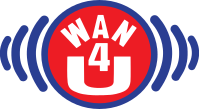PEERING POLICY
Peering
Wan4u has an open peering policy, subject to certain technical, commercial and legal requirements. At times, local infrastructure requirements or constraints may modify these requirements on a temporary or long-term basis.
We offer peering on one autonomous systems (AS number):
- AS328747 - the complete set of Wan4u services and traffic and the most common peering option
We’re able to peer at the Internet Exchanges (IXPs) listed in our PeeringDB (https://www.peeringdb.com/net/25051) entry. Note that some interconnect locations may not be available for all networks.
Note that peering occurs at common physical locations and both Wan4u and any peering network bear their own costs in reaching any such location.
A direct peering relationship with Wan4u removes intermediate network operators (ASNs) from the traffic path. This brings greater control in the form of path preferences and in capacity management for Wan4u traffic.
Resolving operational issues may also be made easier without intermediate network operators in the traffic path.
Traffic exchange between Wan4u and another network operator can be optimized for each relationship.
Technical Requirements
If you want to peer your network with Wan4u, your network must have:
- Publicly routable ASN
- Publicly routable address space
- ASN record completed in PeeringDB
- 24x7 NOC contact
- Minimum traffic requirements as below
- Up to date Maintainer, ASN, AS-SET, and Route/Route6 objects in a IRR that Wan4u supports
Private peering physical requirements:
- Optical physical layer: Single Mode Optical Fibre
- Standard port types: 10G Duplex SFP Single mode LR (wavelength 1310 NM)
- Direct point-to-point links only, only one device on each side, no support for switches in path to multiple routers or MLAG
- Only /30 & /31 IPv4 subnet sizes supported
BGP configuration requirements:
- No support for MED
- No support for multi hop
- Prefer MD5 authentication
- Enabling BGP graceful restart is recommended. Wan4u uses a timer of 300 seconds and suggests that you apply the same timer.
Traffic requirements - public peering:
Wan4u generally does not have a minimum traffic requirement for public peering (subject to any specific market conditions).
Although Wan4u connects to Internet Exchange route servers where present, Wan4u prefers to establish direct BGP sessions for traffic exchange.
Traffic requirements - private peering:
For networks with sufficient traffic (generally above 1Gbps), Wan4u prefers private peering, also known as Private Network Interconnect (PNI).
Regional traffic requirement:
In general, Wan4u will only peer with a network in a region where the peer has sufficient end-user traffic within that region to meet the above public or private traffic requirements.
Routing policy:
In general, peering sessions with AS328747 will advertise all AS-Wan4u routes. At times, local infrastructure requirements or constraints may result in a more limited set of routes being advertised via AS328747.
We will generally not support public peering or route-server learned routes with a network where we have private peering links within the same continent. Note that via route-servers, Wan4u only advertises aggregate routes.
Traffic Management:
Traffic delivery
For traffic exchange, Wan4u will generally prefer private peering links over public peering links, and public peering links over route-server paths.
Wan4u generally:
- Carries traffic on our own network as close to users as possible
- Optimizes traffic delivery for end-user performance
- Respects AS path length and prefix specifics when deciding how to exchange traffic with peers
At times our traffic may not follow these guidelines as a result of observed performance between Wan4u serving locations and the end-user.
Routing announcements:
Wan4u asks that peers advertise all their routes in all locations where they peer with Wan4u, unless an alternative route advertisement policy has been agreed.
Wan4u will manage traffic routing and delivery to ensure optimal performance for end-users.
Capacity augments:
To ensure sufficient peering capacity in the event of an outage we recommend that peers connect with us at more than one location and augment their peering connections when peak traffic exceeds 70%.
If a peering port becomes full due to an outage or other capacity issue, then Wan4u’s traffic management systems will overflow excess traffic to other peering ports or other alternative paths.
Wan4u congestion management:
Wan4u can generally run peering ports at 100% capacity, with low (<1-2%) packet loss for most services. Peers should abide by the capacity augments guideline above.
Other ASNs:
AS328747 is the primary peering ASN for Wan4u.









